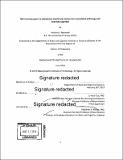| dc.contributor.advisor | Li-Huei Tsai. | |
| dc.contributor.author | Martorell, Anthony J.,
Ph. D.
(Anthony James)
Massachusetts Institute of Technology. | en_US |
| dc.contributor.other | Massachusetts Institute of Technology. Department of Brain and Cognitive Sciences. | en_US |
| dc.date.accessioned | 2021-10-06T19:57:15Z | |
| dc.date.available | 2021-10-06T19:57:15Z | |
| dc.date.copyright | 2019 | en_US |
| dc.date.issued | 2019 | en_US |
| dc.identifier.uri | https://hdl.handle.net/1721.1/132749 | |
| dc.description | Thesis: Ph. D., Massachusetts Institute of Technology, Department of Brain and Cognitive Sciences, June, 2019 | en_US |
| dc.description | Cataloged from the PDF version of thesis. Page 123 blank. | en_US |
| dc.description | Includes bibliographical references (pages 115-122). | en_US |
| dc.description.abstract | Changes in gamma activity (30-90 Hz) have been observed in humans and animal-models of Alzheimer's disease (AD). Examining the relationship between gamma oscillations and disease pathology is a significant problem in neuroscience. Recent work using a non-invasive light flicker at 40 Hz, termed Gamma ENtrainment Using Sensory stimulus, or 'GENUS', was shown to impact pathology in the visual cortex of AD-mouse models. However, it is not known whether other sensory modalities at 40 Hz can change pathology in higher order brain regions, or affect cognition, in AD-like animal models. In this thesis, I combine in vivo electrophysiology, biochemical and imaging techniques, and behavioral assays to understand the effects of multi-sensory gamma stimulation in AD-like animals. I first show that auditory tone stimulation at 40 Hz (auditory GENUS) can drive gamma frequency neural activity in auditory cortex (AC) and hippocampal CA1. I then demonstrate that seven days of auditory GENUS results in improved spatial and recognition memory and reduced amyloid load in AC and hippocampus of 5XFAD mice. These changes in activation responses were evident in microglia, astrocytes, and vasculature. Additionally, auditory GENUS reduced phosphorylated tau in the tau P301S model. Finally, I demonstrate that combined auditory and visual GENUS, but not either alone, decreases amyloid and produces a microglial-clustering response in the medial prefrontal cortex. Whole brain analysis using SHIELD processing revealed widespread reduction of amyloid plaques throughout neocortex after multi-sensory GENUS. These findings suggest that GENUS can be achieved through multiple sensory modalities with wide-ranging effects across multiple brain areas to improve cognitive function. | en_US |
| dc.description.statementofresponsibility | by Anthony J. Martorell. | en_US |
| dc.format.extent | 123 pages | en_US |
| dc.language.iso | eng | en_US |
| dc.publisher | Massachusetts Institute of Technology | en_US |
| dc.rights | MIT theses may be protected by copyright. Please reuse MIT thesis content according to the MIT Libraries Permissions Policy, which is available through the URL provided. | en_US |
| dc.rights.uri | http://dspace.mit.edu/handle/1721.1/7582 | en_US |
| dc.subject | Brain and Cognitive Sciences. | en_US |
| dc.title | Multi-sensory gamma stimulation ameliorates Alzheimer's-associated pathology and improves cognition | en_US |
| dc.type | Thesis | en_US |
| dc.description.degree | Ph. D. | en_US |
| dc.contributor.department | Massachusetts Institute of Technology. Department of Brain and Cognitive Sciences | en_US |
| dc.identifier.oclc | 1264708922 | en_US |
| dc.description.collection | Ph.D. Massachusetts Institute of Technology, Department of Brain and Cognitive Sciences | en_US |
| dspace.imported | 2021-10-06T19:57:15Z | en_US |
| mit.thesis.degree | Doctoral | en_US |
| mit.thesis.department | Brain | en_US |
